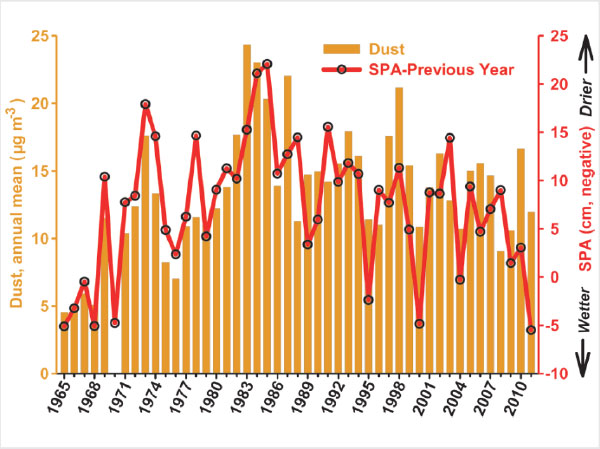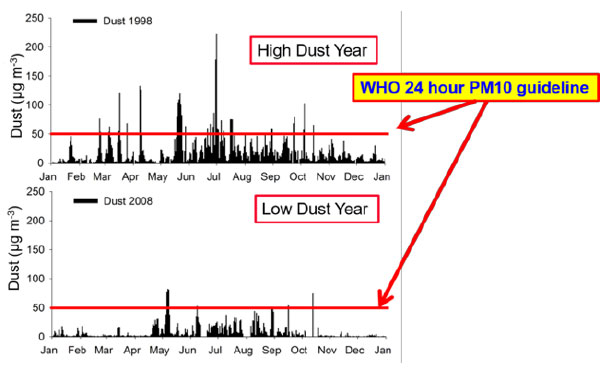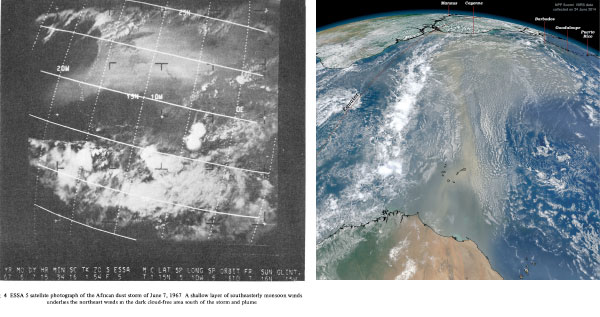Dust-Climate Interactions
- The transport of Saharan dust has proven to be extremely sensitive to climate.
- In the 1970s, a major drought hit Northern Africa and increased dust concentrations were observed in Barbados. The rains eventually returned to normal and so did dust concentrations.
- In the 1980s, a devastating drought returned to the region claiming the lives of humans and livestock. In Barbados, the highest concentrations of Saharan dust on record were observed.
- Most major dust transport events appear to be correlated with El Niño events which cause a deficient rainy season in the Sahel region.
- However, variations in dust concentrations are more complex than simply being inversely proportional to rainfall. Dust concentrations recorded in Barbados are the amalgamation of many things such as: changes in the North Atlantic Oscillation, changes in dust transport paths, variations in dust emission in source regions, and changes in removal during transport, especially by precipitation.
- The great variability in dust transport highlights the sensitivity of the process to changes in regional climate, and exacerbates the need to understand how dust might affect climate on larger scales.
- African dust directly interacts with incoming solar radiation and can facilitate the nucleation of liquid cloud droplets and ice crystals
- The links between climate and dust emssions highlight the need to continue the record at BACO.









